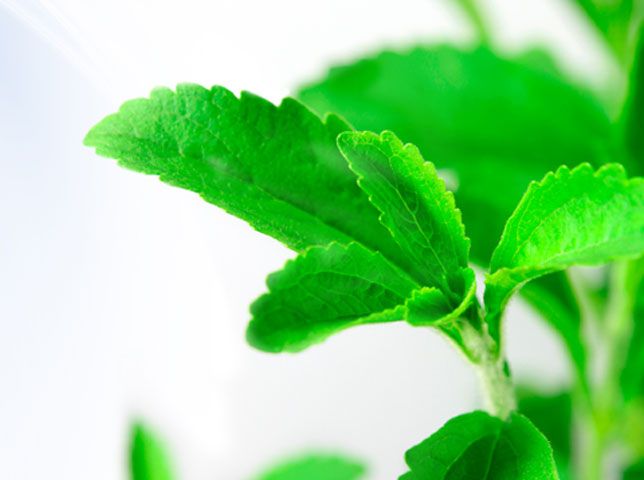Can Stevia Act as a Preservative in Fruity Drinks?
In this study, stevia’s preservative potential was tested in conjunction with high-pressure processing (HPP).

Stevia (Stevia rebaudiana) is a natural sweetener in many healthier-for-you drinks. But can stevia serve as a preservative, too? That’s the question researchers in Spain explored with a new Food Chemistry study.
Although stevia’s natural sweetening properties are well known, fewer know about stevia’s antimicrobial and antioxidant potential. In this study, stevia’s preservative potential was tested in conjunction with high-pressure processing (HPP).
HPP has served in recent decades as a preservative alternative to thermal treatments and chemical additives. Compared to thermal treatments, HPP is said to better retain a food’s taste and nutrients. Foodstuffs are put under high pressure, a process that renders microbial pathogens inactive. HPP can also inactivate degrading enzymes such as polyphenol oxidase (PPO) and peroxidase (POD). (PPO, for instance, is the enzymatic reaction that causes produce to brown.)
One drawback to HPP is that, on its own, its effect against pathogens and PPO/POD is still lower compared to traditional thermal treatments. But added stevia could help boost HPP’s preservative power.
In this study, the researchers prepared PPO/POD extractions from fruits-oranges (Citrus sinensis, cultivar Salustiana), mango (Mangifera indica), and papaya (Carica papaya). Meanwhile, an infusion was prepared from stevia leaves. Different volumes of the stevia solution (3 and 6 ml) were then added to the fruit enzyme extract, yielding final stevia concentrations of 1.25% and 2.5% (w/v), respectively. Researchers also created a “blank” sample containing only 14 ml of the enzymatic extract and 6 ml water, but no added stevia. They then evaluated total phenolic content, PPO and POD activity, antioxidant capacity (using TEAC and ORAC assays), and microbial inactivation-specifically, Listeria monocytogenes.
Even without added stevia, the HPP treatment did reduce PPO enzyme activity. Results were less impressive for reduced POD activity, though; researchers say POD is more resistant to HPP treatments compared to PPO.
When stevia joined HPP, however, inactivation of PPO and POD spiked. “[C]omplete inactivation of POD was achieved with the Stevia concentration 2.5% (w/v),” researchers said. “In the case of PPO, the maximum reduction achieved was 98.13% with the highest treatment tested (500 MPa, 15 min, 2.5% (w/v) Stevia).”
Stevia plus HPP also helped inactivate Listeria monocytogenes, and it raised total phenolic and antioxidant content. “Specifically, a treatment of 453 MPa applied for 5 min combined with 2.5% (w/v) Stevia inactivates at least 5 log cycles L. monocytogenes and maximizes TPC content and antioxidant activity while minimizing PPO and POD activities,” the researchers reported.
“HPP is an attractive food preservation technology that clearly offers opportunities for [the] horticultural and food processing industries to provide new functional foods of proven physical and nutritional quality, thus increasing product added value, especially if it is combined with the addition of Stevia, a natural ingredient that acts as a low-calorie sweetener and as an antioxidant and antimicrobial at the same time,” they wrote.
“The results suggest that the combination of HPP with Stevia can be a useful tool in order to obtain safe and shelf-stable fruit-based beverages with enhanced antioxidant and nutritional properties,” they concluded.










